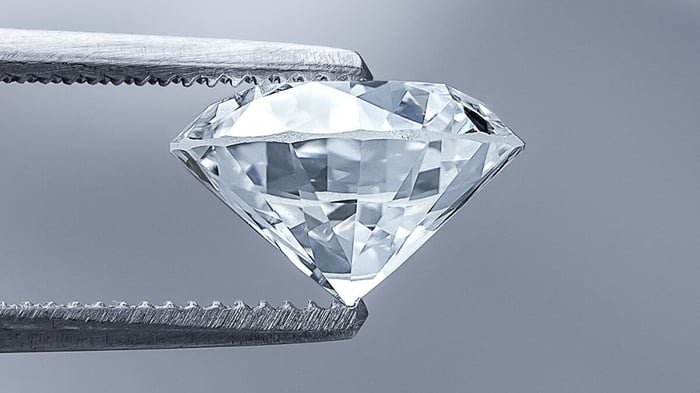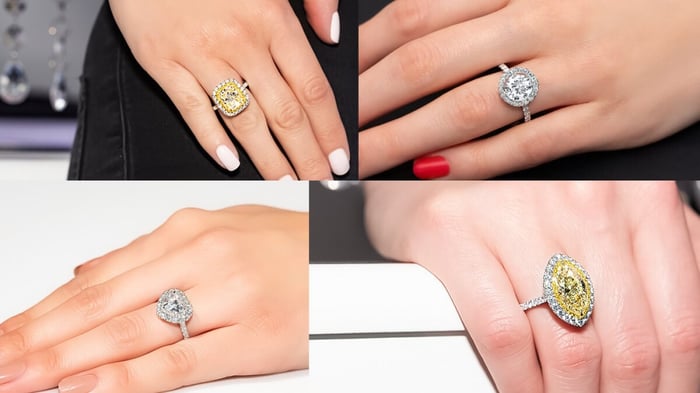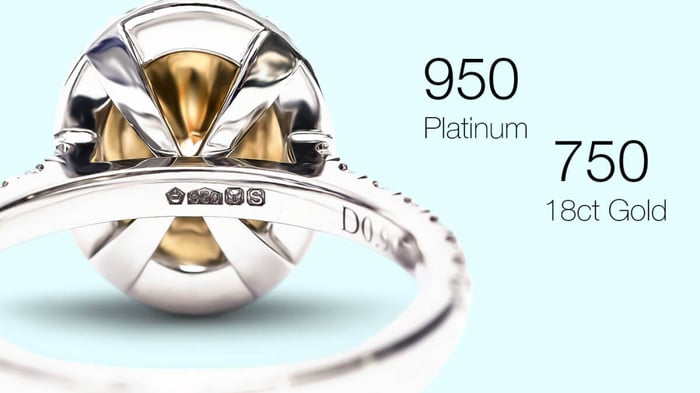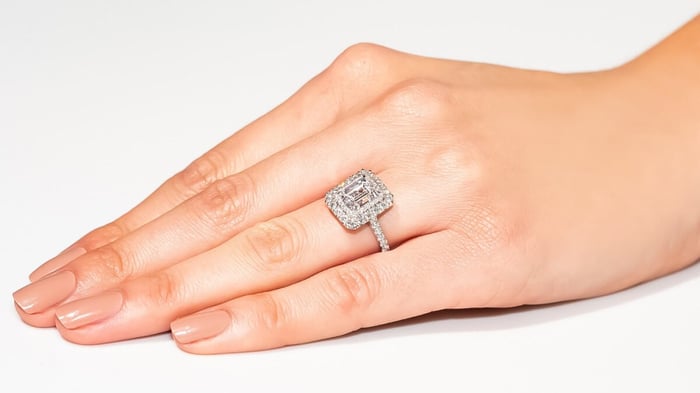What You Should Look For When Buying Your Perfect Diamond
A diamond is forever. The saying is true. Diamonds are among the most durable of the items in the universe. The diamond you buy now will be part of your life for decades to come, so making the right choice for you is essential. All Diamond's expert jewellers can help you throughout the process of choosing the perfect diamond and creating the perfect ring or other jewellery to complement it. With a little knowledge, you can have confidence in knowing that you have made the best choice for your needs.
Elsewhere on our site, you can find more information about diamond certifications and the vital 4Cs that will help you to choose the best diamond for your needs but, important as that information is, there are other important factors to consider. Here is a checklist of all the essential elements you should consider when you choose the diamonds for your next jewellery investment.
The first four points below are the 4Cs that are the basis of how a diamond is judged. The others are important additional considerations to consider when you make an investment in a diamond.
Cut

Contrary to popular understanding the 'Cut' of a diamond is not about the shape of the stone but refers to the quality of the cutting that goes into creating the shape. The cut of a stone affects the brilliance (sparkle) of the diamond. Poorly-cut diamonds have less of the classic sparkle associated with diamonds. A well-cut diamond will have perfect proportions and symmetry to enhance the internal and external reflection of light and a high-quality polish so that all the cut surfaces are as smooth as possible.
Colour
Diamonds are found in a variety of colours, not just white. Pink, blue and yellow are popular shades. In a white diamond, the goal is usually to have as white a stone as possible, and even a slight hint of yellow can affect the value of the gem. All larger, high-value Tresor Paris diamonds carry a certification from the GIA, the foremost diamond assessment authority. Part of the certification refers to the colour of the stone with a range of shades for white diamonds running on a scale from D through Z with D being the clearest and Z being lightly coloured.

When you choose a stone, it is worth matching the shade of the diamond to the colour of the metal used for the setting. For best effect, match diamonds with a shade D, E or F to platinum or white gold and all others to yellow gold. This will enhance the colour of the stone, creating a better visual effect.
Carat
Carat refers to the size of the diamond by weight. A metric carat is 200 milligrams. Each carat is subdivided into 100 points or 2 milligrams. This system enables precise measurements to be made helping buyers to ensure they get what they paid for!
Clarity/Purity

Clarity is the degree to which the stone has flaws inside it. Most natural stones have some degree of flawing; usually, they are invisible to the naked eye. Jewellers assess the clarity of diamonds under 10x magnification and grade the diamond using a standard clarity grading chart.
Polishing
When a diamond is cut to create the facets giving the stone its 'sparkle' the surfaces of the stone must be made as smooth as possible. Surface defects can be added to the stone by the act of polishing as the polishing when is moved across the surfaces of the stone. These tiny scratches can diffuse light rays as they enter and leave the diamond making it less bright.
If your diamond’s report says that the polish grade of the diamond is Excellent to Good, then there should be no defects visible to the naked eye in the polishing and no effect upon the diamond's appearance. If the clarity of the diamond is l1 or lower, then a lower standard of polish is acceptable due to the existence of visible flaws inside the diamond.
For any diamonds used in jewellery, always look for a polish grade that is better than poor, no matter the size or clarity of the stone.
1.25ct Baguette & Round Cut Claw Set Diamond Cross in 18k Yellow Gold
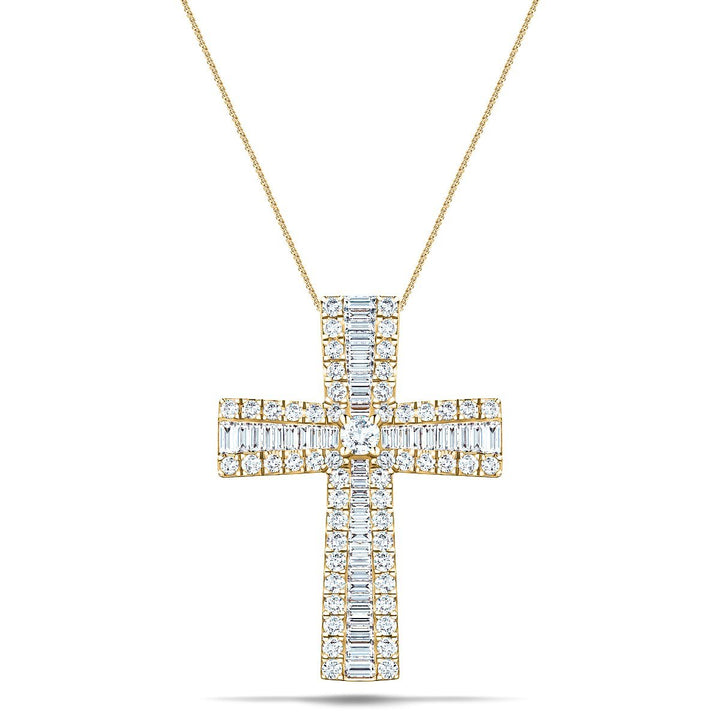
£2,327.00
£3,127.00
This pendant has a bold 18k yellow gold cross setting which shows off the beautiful 1.25ct of ethically sourced G/SI diamonds to their best advantage. The elegant 18k yellow chain flows across the skin down to the handcrafted baguette and… read more
Culet
The culet of a diamond is the bottom of the diamond where all the facets come to a point. The size of the culet is an indication of the care taken, and the quality of the work carried out by the cutter and polisher of the stone. Ideally, the stone’s facets will come to a point, some diamonds will be intentionally cut to a medium culet to protect against chipping, but a larger culet will become increasingly visible from the face of the gem seen as a dark circle visible from the front of the stone.
Girdle
When looked at from the side, a cut diamond will have a clear top (called the crown) and a bottom (called the pavilion). The girdle is the line separating the two. Usually seen as a fine, slightly wavy line when examined under a jeweller’s loupe. A well-cut stone will have an almost even line. The quality of the girdle is an indicator of the quality of the work that has gone into the cutting and polishing of the diamond.
Certification
Every diamond that you buy for jewellery should have a certificate from a gemological expert. The certificate attests to the authenticity and quality of the stone you are buying. There are several recognised gemological assessment laboratories; however, there is just one that is accepted universally as being the most authoritative, most reliable, and most consistent: the GIA. Established in 1931 in the United States, the GIA devised the 4Cs of diamond quality and the Diamond Grading System, which together are the basis of all diamond certification today.

Because of the reputation of, and trust in, GIA certification, most diamonds used by All Diamond in their jewellery carry GIA certification. Wherever you choose to buy a diamond, you should always ask for its GIA certificate and be cautious of any diamond that does not carry a certificate from the GIA.
Because diamond jewellery is a substantial investment, you need to be objective when making your choices, but at the same time, jewellery is also an emotional purchase. Buy the diamonds and jewellery that you love.
Because you may have emotional reasons to choose a particular diamond your choice might not be exactly the same as a trained jeweller, but you and the recipient will be living with the choice for many years and every day will remind you of the emotional choice that the perfect diamond you chose represents!
